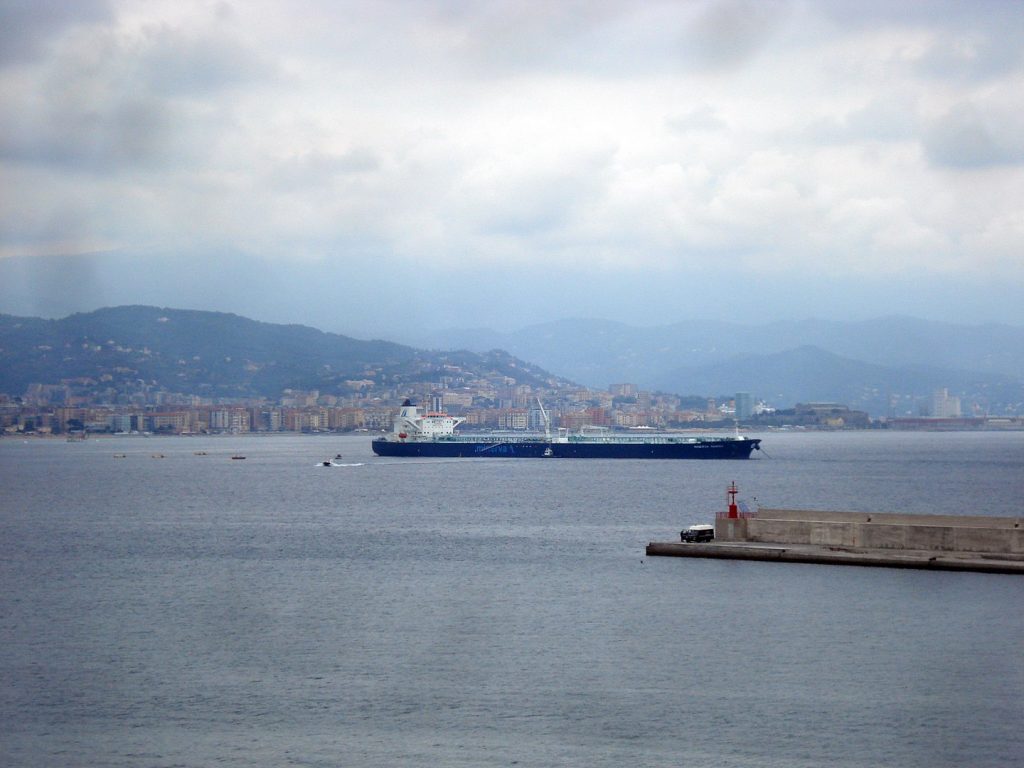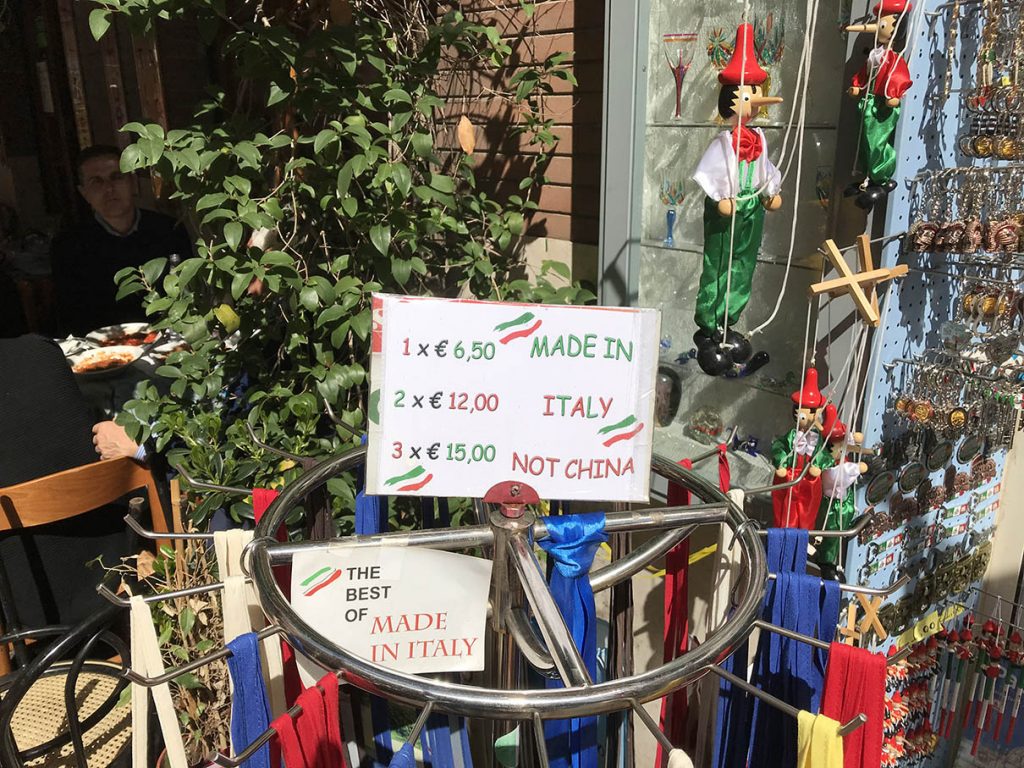Rome and Beijing: Divorce Italian style?
Italy’s enthusiasm for Chinese investment has recently cooled, as transatlanticism, security risks and domestic resentment become decisive factors. The Italian change of heart is shared by the EU, which is finally developing a coordinated and values-based response to Chinese economic activity in the bloc.
On 21 March 2019, the Chinese president Xi Jinping landed in Rome to sign an agreement with Italy on China’s vast Belt and Road Initiative (BRI). Accompanied by 500 high-level political and economic leaders, Xi was greeted lavishly. Putting his name to some 30 economic memoranda, he personified the expected Chinese investment bonanza that would now be entering the country.
As the first G-7 economy to participate in the BRI, Rome brushed aside sharp criticism from the US and allies in Europe. Politicians and business people from Trieste to Rome gushed about the promise of $20 billion in infrastructure investment and the chance to see ‘Made in Italy’ all over China. ‘Italy has won and Italian companies have won,’ said Luigi Di Maio, deputy prime minister at the time of the signing.
Di Maio and his Five Star Movement were key architects of Italy’s vigorous overtures toward China under the first government of Prime Minister Giuseppe Conte (2018–19). Now, some two and a half years and two governments later, Rome is displaying a decidedly different attitude. Even though the government of Mario Draghi includes many of the same people, the tone towards China is frostier. The government’s actions reflect a different calculus. It blocked two major Chinese investments in the spring of 2021 and in June supported NATO’s stern warnings about China’s ‘coercive policies’. Italy’s foreign minister made the country’s stance clear: ‘Italy is a strong trade partner of China; we have historic relations, but they will not interfere with the relationship we have with the US and NATO.’ The foreign minister is Luigi Di Maio.
Italy’s new path is the product of several domestic and international factors, reflecting the collision of forces that shape national policies. Will these produce similar changes in Europe’s other important China-active countries, above all Germany and France? This would have transatlantic significance, since crafting relations with China is the central foreign policy challenge for the United States.
L’affare Romano
For years Italy offered China a welcoming environment. Successive Italian governments, squeezed by national debt (120% of GDP) and anemic growth, were eager partners for Chinese investors flush with cash. In 2017 Italy participated in the inaugural forum of the BRI and by 2019 had accumulated €16 billion in Chinese investment, ranking third among EU countries (after Germany and France).
Italy’s highly developed and centrally located infrastructure was a key target for Chinese buyers. Thirt-five percent of the country’s electrical grid and 49% of the port of Vado, the largest refrigerated facility in the Mediterranean, is now in Chinese hands. High-profile Italian firms like Telecom Italia, UniCredit, and Pirelli Tires, along with others in entertainment, sports and hospitality have major Chinese partners or owners. Italian governments were at pains to assure a wary public that these investments were definitely not predatory.

The port of Vado. Photo by –=XEON=–, CC BY 3.0 via Wikimedia Commons
The key moment was in 2008, when the global economic crisis provided an opportunity for China to expand foreign direct investment (FDI) into the world’s most advanced economies. Needing new technology, innovation, better supply lines, and outlets for its chronic cash and production overhangs, Beijing pushed cash overseas and provided generous government support, especially for State Owned Enterprises (SOEs). At the same time, the ruling Communist Party was acutely aware that China’s western provinces needed development (a key goal of the BRI) and that its huge middle class required a steady stream of consumer goods.
The EU has been especially attractive for Chinese investment. It is the world’s largest single market and offers an unevenly regulated FDI environment. Unlike in trade, investment deals can be negotiated with individual countries, an approach that allows China to find the most favourable terms. With the Euro crisis roiling the EU’s south, Chinese investors arrived with oceans of cash, few troublesome strings and, for recession-stalled exporters, the prospect of access to China’s massive internal market.
A presence inside the EU had an additional benefit for Beijing: the opportunity to weaken EU and transatlantic solidarity. In recent years two of China’s most eager EU partners, Greece and Hungary, have watered down or blocked EU resolutions on the South China Sea and Hong Kong.
Italy alters course
Italian enthusiasm for China reached a high point during the coalition of the Eurosceptic Five Star Movement (FSM) and the right-wing Lega, elected in 2018. Lega leader Mateo Salvini was hostile to this approach but the FSM saw China as an important balancer to both the EU and the US and argued that Italy was just catching up. ‘We are at the heart of the Mediterranean, yet the Chinese are everywhere in the region except here,’ said junior industry minister Michele Geraci, who headed up a China Task Force under the first Conte government.
After the FSM–Lega arrangement was torpedoed by Salvini in 2019, the second Conte government (2019–2021) included voices that were more critical of the approach to China. The new minister of European affairs, Vicenzo Amendola of the Democratic Party (PD), indicated that ‘if we … were the government, we would have never signed the Silk Road Agreement with China.’ The fact was, however, that in a previous government (2017) the PD had initiated talks on joining the BRI. The second Conte government proved more cautious than the first. It used its ‘golden powers’ to screen investments (broadened in 2017 and again in 2019) to impose restrictions on the purchase of communications technology by the Chinese megafirms Huawei and ZTE. A high-profile plan to cooperate in the production of space vehicles was shelved in response to US concerns.
The atmosphere became chillier still in 2021 when the second Conte government fell apart and the former head of the European Central Bank, Mario Draghi, became prime minister. Draghi has made clear that Atlantismo would guide the government’s positions, including on China. The government has signed on to the June NATO statement that warned of China’s ‘systemic challenges to the rules-based international order’ and called on Beijing to ‘act responsibly in the international system’.
Draghi’s cabinet includes the Lega’s Giancarlo Giorgetti, whose views reflect a less credulous attitude toward Chinese investment. ‘We are not against foreign investments,’ he said, ‘but against predatory foreign investments.’ In April, the government blocked a bid by a Chinese company to take over a small semiconductor firm and then prevented FAW, China’s largest automaker, from acquiring yet another flagship enterprise, the Iveco truck and bus company.
Popular resentment
The Italian public has long been among Europe’s most negative towards China, to a large extent due to antipathy toward the Chinese community in Italy. At more than 300,000, it is one of the largest in Europe with centres in Veneto, Lombardy and Tuscany. Many Italians resent the Chinese-run sub-economy as a threat to Italian labour, to the country’s small and medium size firms, and to the ‘Italian way of life’. As one competitor put it, ‘Made in Italy means made by Italians!’ Occasionally, Italian police crackdowns have produced admonishment by the Chinese government.

Image copyright Ronald H. Linden
Commentators have long been nervous about the Chinese presence. Alarmed by growing Chinese ‘soft power’ initiatives, they have warned of a Chinese ‘charm offensive’ in the media. Attitudes toward China improved a bit after the EU’s sluggish response to the COVID outbreak gave Beijing an opportunity to burnish its image with offerings of equipment and financial aid. But the specious nature of China’s posture was revealed almost immediately when it emerged that China’s ‘donation’ of ventilators and doctors to Italy was in fact a previously negotiated sale. China’s delay in sharing information and especially its campaign suggesting that the disease had begun in Italy did not help. In 2021 the Italian trade association Mio Italia sued the Chinese ministry of health for its delayed reporting of information and failure to take prompt action, seeking €200 million in compensation for damages to the Italian hospitality industry.
Even more than in the past, local leaders must walk a tightrope between economic plans and domestic backlash. When Yilport Holdings, a Turkish company, signed a deal in 2020 to revive the main terminal in Taranto, the company had to publicly dispel reports that it would bring the Chinese with them. And when contracts were awarded to rebuild the collapsed Morandi bridge in Genoa, regional leaders were quick to deny Chinese involvement.
Offering ports
Even in cases where it might be geopolitically fraught, the prospect of Chinese investment into Italy was seductive. In 2014 Rome touted a ‘Five Port Alliance’ that would have featured a major Chinese presence in Venice, Trieste and Genoa. While that plan did not materialize, agreements on Trieste and Genoa did accompany Italy’s entry into the BRI. For China, the two Italian ports were to be jewels in a ring of acquisitions across the Mediterranean.
Even poor treatment in the past did not dampen the Italian desire to draw China back in, as seen in the case of Taranto. Part of a key economic zone on the heel of Italy’s ‘boot’ and roughly equidistant between Gibraltar and the Suez Canal, the port is ideally located to be a top commercial transit hub. But after long and frustrating negotiations, China’s shipping giants shifted their traffic to Piraeus, Greece. The last large Chinese ship left Taranto in 2015. Piraeus is now the busiest port in the Mediterranean and fourth busiest in Europe, while the main container terminal in Taranto has been inactive for years. When the Chinese showed renewed interest in 2020, the Taranto Port Authority and the Italian prime minister Guiseppe Conte were eager suitors.
But Taranto hosts a major Italian naval base and is home to several multilateral EU and NATO operations. When reports surfaced in 2020 of possible Chinese interest, a parliamentary group charged with overseeing Italian security leaked a critical report to the press. Fearful that the presence of state-controlled companies like Huawei could challenge NATO and EU assets or compromise communications, the Italian MEP Anna Bonfrisco asked the EU to look into the sale. As she put it bluntly: ‘We cannot endanger us and the whole of Europe.’ In addition, promises of investment into Trieste and other Italian ports have gone unfulfilled.
Ecological concerns have surfaced as well. In Venice, the prospect of millions of Chinese tourists – dangled as an inducement – instead dismayed Pino Musolino, the Director of the Port, who worried that this would destroy what made Venice a cherished tourist site. He called the BRI ‘a huge design aimed at controlling trade flows and controlling the main global value chains. If you control those, you don’t need to control any army anymore.’ Even accounting for the pandemic’s negative effect on investment and trade, few gains have followed rhetoric and neither Italy’s ports nor the economy overall have seen significant value added from the BRI.
The EU stirs
Domestic factors alone, as important as they are, do not explain the changed orientation of Italy toward China. Important changes in allies’ stance have enabled Rome to frame a more nuanced and critical response to China.
The 27 EU economies are each other’s largest trade and investment partners. While much authority has been ceded up to Brussels under the EU’s notion of ‘pooled sovereignty’, the power to monitor and govern foreign investment still rests at the national level. This produces a patchwork of policies – or none at all. As late as 2017 fully one-half of EU members had no foreign direct investment screening framework in place. Nor did Brussels.
But European attitudes toward Chinese economic practices have hardened. During 2017–2018 the European Commission, the European Parliament, and virtually all EU ambassadors criticized China’s BRI policies and the unbalanced nature of its trade and investment deals. Early in 2019, the EU labelled China an ‘economic competitor’ and called attention to the rapid and unregulated growth of China’s investments in the bloc, the lack of reciprocity, the role of SOE’s and issues of national security. Germany, France and Italy, the top three countries for Chinese investment, called for additional protection at the EU level.
In 2020, an FDI review mechanism was finally put in place. It identifies sectors within which states might adopt tighter restrictions, including critical infrastructure and technology, energy, access to information and pluralism of the media. For the first time, Brussels issued a comprehensive report on all foreign investment not originating in the EU. Among other things, it revealed that Chinese partners, who had controlled 5,000 firms in 2007, held more than 28,000 by 2017. Under the new mechanism the EU still cannot compel national restrictions, but the action legitimates EU-level interest in Chinese investment and reinforces concerns based on security and ‘public order’ criteria.
In December 2020, a long-awaited investment treaty was signed between the EU and China. It aims to provide the first multinational framework for negotiations with Beijing. The agreement, if ratified, would open the automotive, health, financial and service sectors to foreign investment and restrict the Chinese practice of forcing investors into joint ventures through which sensitive technology is transferred to Chinese partners. For Rome and other EU members, this would mean that Beijing would face a multinational mechanism for negotiations, representing 27 countries and 450 million people, instead of just a single state. The EU is now doing what Italy did two years ago: signing a multilateral pact with China.
Stronger on human rights
Civil and human rights are enshrined in the EU’s founding charters, institutions and practices. The organization’s normative muscles were on gaudy display during the 1990s, when Brussels forced the adoption of broad democratic and human rights laws in the former communist East European states who wanted to join.
But China does not want to join the EU and advances its own set of social and political values. It firmly rejects attempts to erode its sovereignty by allowing the EU a say in its domestic or regional affairs. For its part, the EU has struggled to find an effective strategy between a foreign policy based on values and one based on interests. After the Tiananmen Square massacre (1989), the EU froze all ties until a mechanism, the EU–China Human Rights Dialogue, was created in 1995. This allowed economic relations to resume along with annual non-public sessions in which individual and group human rights issues are raised – and usually rejected by China.
The EU’s attempts to balance morals and money are not unlike the dilemmas faced by nation states. But the EU’s attempts are complicated by the fact that the Parliament, the Commission and, of course, its most powerful members apply different formulas to ties with China. This has allowed Germany, for example, to become Beijing’s most active economic European partner, advancing human rights ‘quietly’ while avoiding challenging Beijing publicly.
The EU’s weak human rights instrument and behind the scenes admonishments of Beijing from leaders like Angela Merkel have been disparaged repeatedly. Evidence of extensive detention camps for the Uighur minority and Beijing’s crackdown on the democratic opposition in Hong Kong have sharpened the issue. In response, the EU has begun to find its voice on human rights. In a 2019 strategy paper, China was referred to as a ‘systemic rival promoting alternative models of governance’; and in spring 2021 Brussels applied modest sanctions – the first since Tiananmen Square – against regime officials for actions in Xinjiang.
The EU is now faced with its biggest ‘values vs. interests’ foreign policy challenge since Tiananmen. The investment treaty, despite its economic value, was harshly criticized because it offered only vague Chinese promises in the areas of workers’ and human rights. The treaty is now on hold because the European Parliament froze consideration due to Chinese actions in Xinjiang and Hong Kong and its retaliatory sanctions against EU officials.
For Italy, a newly vocal EU provides an important platform for its own criticism of China. This is especially important as domestic pressures have grown on the Draghi government to be tougher. In March 2021, Rome joined the EU in sanctioning Chinese officials over their oppression of the Uighurs and called in the Chinese ambassador to make the point. And in May, the Italian parliament unanimously passed its own resolution condemning Chinese actions.
Change and continuity in Washington
The central foreign policy question for the United States will, for the foreseeable future, be how to respond to China. Various strategies have been in evidence in Washington throughout the past decade. Donald Trump preferred confrontational actions on trade and investment. Continuing Trump’s policies, if not his rhetoric, Joe Biden has also adopted an aggressive economic and political stance toward China. But unlike Trump, Biden recognizes the value of working with its most important economic, political and moral allies on this and other challenges.
Thus, one of the most significant changes in US policy has been the return to a cooperative American stance towards Europe. Nowhere has this shift been clearer than on China policy. The Biden administration has emphasized its hard line on China on economic, geostrategic and human rights issues. Tariffs put in place under Trump have not been modified and a ban on investment in Chinese companies serving military purposes was expanded to include those engaged in surveillance. At the first US-China summit, Chinese actions in Xinjiang and Hong Kong were sharply condemned.
For Biden, Europe plays a central role in the formation of policies designed to challenge China’s influence. The US administration was unhappy about the haste and timing of new EU–China investment treaty, but in his first European summit Biden came away with a new ‘Build Back Better World Partnership’ to channel billions in transparent, ‘values based’ investments into low and middle income countries around the world. If it looks like a EuroAmerican BRI, it’s supposed to.
For both Americans and Europeans, infrastructure vulnerability and technological penetration have high salience. As La Republica puts it, ‘ports and 5G networks are the two pillars around which the match between China and the US is played out in Italy’. But instead of browbeating US allies, as Trump’s people did, Washington supported the creation of an EU–US Trade and Technology Council, one of whose aims is to ‘cooperate on key policies on technology, digital issues and supply chains’. As much by its direction as by any ultimate results, this kind of cooperation changes the field on which the allies form their China policy.
Finally, both the US and Europe are now willing to assert their values. For states like Italy, the NATO communique and that of the G7 summit condemning human rights abuses in China provide an important platform on which to make clear their own attitudes. And these get Beijing’s attention. After the NATO summit, China’s foreign minister Wang Yi called Luigi Di Maio directly, emphasizing the urgent need to intensify relations between Italy and China. Di Maio’s response was lukewarm, demonstrating more clearly than ever that the once passionate L’affare Romano was now more like Divorce Italian Style.
Striking the balance
Italians are no strangers to the conflicting dynamics that result from dealing with Asia. Ever since the Risorgimento, Italians have found themselves squeezed between powerful domestic and external forces. But while historically familiar, the course of Italy’s ‘diplomatic waltz’ (as Dario Cristiani has called it) is not predetermined.
Rome broke EU ranks to sign up to the BRI in 2019, but it also effectively banned Huawei and ZTE, which Germany has yet to do. Italy expanded government controls on FDI and blocked two high profile Chinese projects, but the shunned suitor in the Iveco deal, FAW, is still putting a billion euros into a factory in the Emilia-Romagna region to build electric cars. Italy has shown a willingness to rebuff rich Chinese actors, tighten investment controls and – with its allies – issue sharp rebukes on human rights. But its economic, geostrategic and even political attractiveness to China remains. Trying to use that leverage during the final withdrawal from Afghanistan, Italian leaders provided alternative channels of communication with Beijing to suggest various means of cooperation in the region.
Other European countries are more eager than ever to grow their pandemic-battered economies. And their governments still need to fend off populist challenges. China’s trade and investment offer big benefits on both scores, if carefully managed. The Italian case shows that a more cautious and even critical posture toward China can be built. Balancing economic needs, domestic reactions, differences with allies and respect for values can be accomplished in ways that preserve national security, economic gains and, perhaps, national dignity.
Published 22 September 2021
Original in English
First published by Eurozine
© Ronald H. Linden / Emilia Zankina / Eurozine
PDF/PRINTIn collaboration with
In focal points
Newsletter
Subscribe to know what’s worth thinking about.
Related Articles

The decisive sex-change moment in movies, revealing a dramatic transformation, is far from reality. Transgender people face not only long assessment and surgery waiting lists but also bureaucratic hurdles when reassigning legal gender across countries, undermining their well-being and safety at a delicate time of becoming themselves.

Since the collapse of Novi Sad’s train station in November, student-led protests have erupted across Serbia, inspiring a nationwide movement against corruption.






